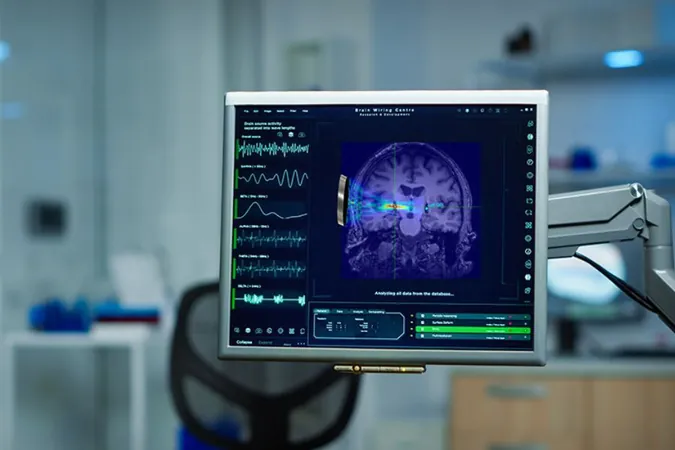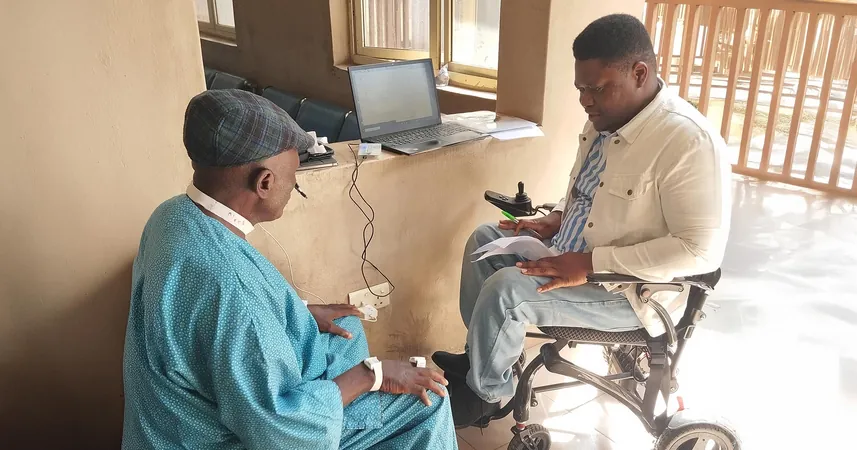
Revolutionary Non-Invasive Treatment Could Transform Care for Movement Disorders!
2025-07-03
Author: Michael
Breakthrough Technique for Parkinson's Disease!
A groundbreaking study from the Krembil Brain Institute has unveiled a novel technique for treating movement disorders like Parkinson's disease, and it's turning heads in the medical community.
Transcranial Ultrasound: A Game Changer!
Researchers have been exploring transcranial ultrasound (TUS) — a method that harnesses sound waves to precisely target specific brain areas through the skull. This innovation could offer a revolutionary non-invasive alternative to deep brain stimulation (DBS), which is a common, yet invasive, treatment.
Why TUS Matters!
Deep brain stimulation involves surgically implanting electrodes to deliver high-frequency electrical impulses to affected brain regions, such as the basal ganglia in Parkinson's patients. While effective, the surgical nature of DBS can be a serious barrier, preventing many from seeking treatment.
With TUS, the need for invasive surgery may soon be a thing of the past. By providing a non-invasive approach, TUS has the potential to make effective treatments more accessible, significantly enhancing patient safety and convenience.
Clinical Insights From the Research Team!
Led by Dr. Robert E. W. Chen and Dr. Ghazaleh Darmani, both experts at the Krembil Brain Institute, the research demonstrated that TUS can accurately target small brain structures and influence neuronal activity among Parkinson's patients. This precision is a promising indication that TUS could yield symptom relief akin to traditional DBS.
Personalized Treatment: The Next Frontier!
Interestingly, the reactions to TUS varied based on the treatment settings and the medication levels in patients, suggesting a personalized approach to managing symptoms could become a reality.
The team also found that when TUS was applied to healthy individuals, it produced behavioral changes distinctive to the targeted brain region, implying that the focus matters. Careful selection of the treatment parameters could lead to tailored therapies for patients.
Unlocking the Future of Movement Disorder Treatments!
While this promising study calls for more extensive research to confirm its findings across a broader patient base, the potential of TUS stands out. With an expanding understanding of this technology, the future looks bright for individuals with Parkinson's and other movement disorders, paving the way for innovative, safer treatment options worldwide.
This study has been generously supported by donors to the UHN Foundation, underscoring the collective effort for progress in medical science.









 Brasil (PT)
Brasil (PT)
 Canada (EN)
Canada (EN)
 Chile (ES)
Chile (ES)
 Česko (CS)
Česko (CS)
 대한민국 (KO)
대한민국 (KO)
 España (ES)
España (ES)
 France (FR)
France (FR)
 Hong Kong (EN)
Hong Kong (EN)
 Italia (IT)
Italia (IT)
 日本 (JA)
日本 (JA)
 Magyarország (HU)
Magyarország (HU)
 Norge (NO)
Norge (NO)
 Polska (PL)
Polska (PL)
 Schweiz (DE)
Schweiz (DE)
 Singapore (EN)
Singapore (EN)
 Sverige (SV)
Sverige (SV)
 Suomi (FI)
Suomi (FI)
 Türkiye (TR)
Türkiye (TR)
 الإمارات العربية المتحدة (AR)
الإمارات العربية المتحدة (AR)